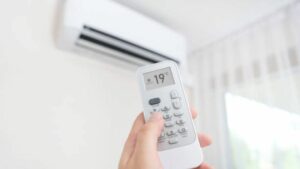The Uncommon Two-Story House Cooling Dilemma

You’re not crazy—it’s true. Your upstairs feels warmer than downstairs, particularly when that brutal Texas heat blows into town. This homeowner’s complaint reaches our Southlake and surrounding neighborhood customers at AGES Services Company. You make your way upstairs, and you could swear that you’ve traveled into a different zone of the country altogether. It’s hot, it’s miserable, and it usually feels impossible to cure. But here’s the best part: it can be cured, and you don’t have to endure another summer heat breakdown. Let’s dissect what’s going on and how we can assist you in getting control back of your home’s comfort.
Understanding Why Upstairs Gets Hotter
It all begins with fundamental science. Warm air rises, and cold air falls. So by default, your second story will be warmer than your ground floor, particularly in the summer when your roof absorbs heat like a sponge. That heat finds its way into your attic; without insulation or ventilation, it seeps into your upstairs bedrooms and corridors.
Also, most residences only have a single thermostat, typically on the first floor. Once downstairs is heated to your desired temperature, your system turns off, even though it’s still warm upstairs. This complicates maintaining both floors comfortable simultaneously.
Key HVAC System Factors That Influence Upstairs Cooling
Let’s discuss your HVAC system’s function in this temperature imbalance. Several things could be happening behind the scenes:
- If your system is older (i.e., 10-15 years), it might not have the capacity or efficiency to cool your entire house evenly.
- Ductwork leaks or poor duct design can stop cold air from reaching the upstairs floors.
- Single-zone systems lack the flexibility for multi-level climate control.
These problems are universal and can be corrected, but typically require a professional’s hand.
Why DIY Isn’t Enough to Solve the Problem
Yes, you’ve likely attempted some standard DIY solutions—closing curtains, turning on ceiling fans, or sealing off vacant rooms. While those may provide short-term relief, they’re not a solution. Without focusing on the source of the problem—your HVAC system—you’re simply applying a bandage to the issue. You require professional assistance beyond surface solutions to level out temperatures around your home.
Professional HVAC Solutions That Work
At AGES Services Company, we have experience solving this type of problem. Here are a few of the professional solutions that really can make a difference:
- Install a multi-zone HVAC system to control each floor’s temperatures independently.
- Upgrade to a newer, high-efficiency air conditioner capable of dealing with Texas heat and reducing energy bills.
- Seal and repair ductwork to ensure your system isn’t losing cool air in transit.
- Install a second HVAC unit for big or multi-level houses requiring extra cooling assistance.
- Enhance attic insulation and ventilation to avoid heat accumulation and transmission.
When to Call an HVAC Professional
If your second-story still feels like a sauna regardless of what you do, it’s time to bring in the experts. A professional HVAC technician can assess your home, check your system, and suggest fixes that fit your design and requirements. The sooner you do it, the less stress you put on your AC unit—and the steeper your energy bills will be.
Invest in Comfort With Professional Help
No one likes playing thermostat tug-of-war all summer. Your house should be consistently comfortable on every level, not only the primary one. At AGES Services Company, we’re happy to keep Southlake homeowners cool and comfortable regardless of Texas weather. Don’t sweat it—literally! Reach out to AGES Services Company today, and let’s get your upstairs as cool as your downstairs.
